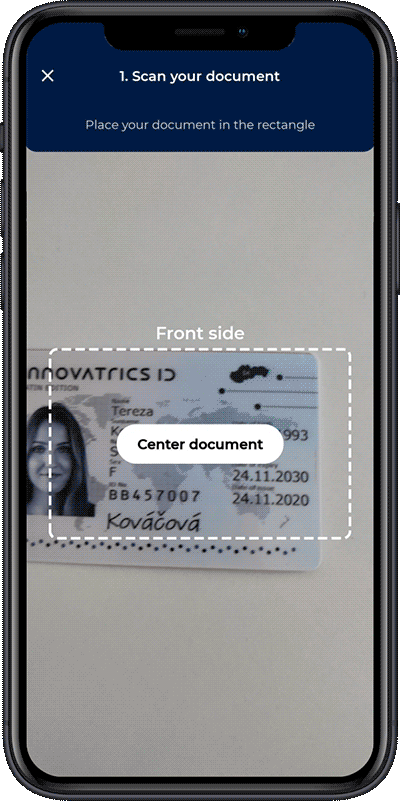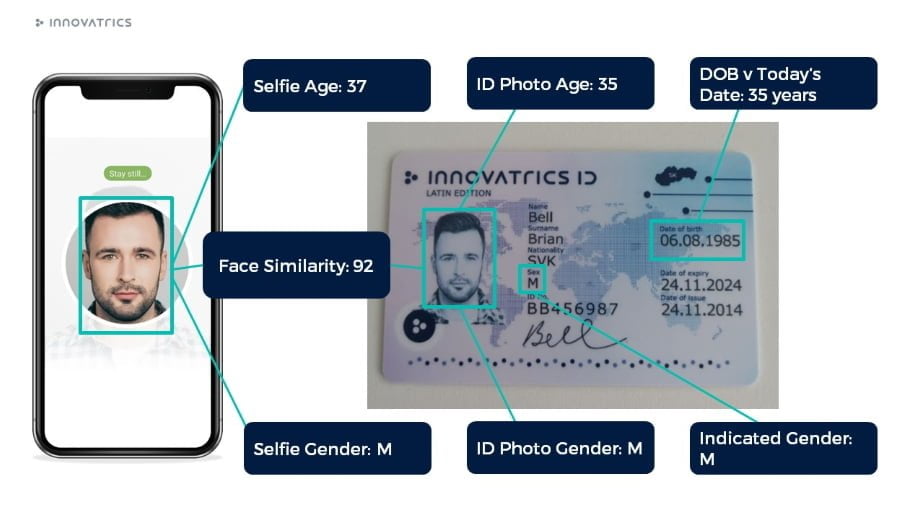Document Verification definition
Document verification is all about checking the authenticity of documents to make sure they are accurate, genuine, and suitable for their intended use. Common documents used for identity verification, like driver’s licenses, ID cards, and passports, must be validated to ensure they truly represent the person.
Some documents include sensitive information, like financial records or confidential data, and require validation to ensure their accuracy and trustworthiness. This is where document verification services come into play—they help confirm that these documents are legitimate and reliable.
What Is Document Verification?
With the prevalence of digital communication, the process of confirming the authenticity of a document that is being scanned, emailed, or sent online becomes ever more crucial. Document verification services use a series of protocols and processes to determine whether a document is genuine.
The system verifies the authenticity of photo IDs, contact details, stamps, watermarks, QR codes, and fonts. The process also checks that documents are up to date and that they are still valid and contain the most recently updated, correct information. Thus, this process is digital, using AI, automation, and machine learning to assess and compare uploaded documents and confirm their authenticity.
How Does the Document Verification Process Work?
Identity document verification can be done using a number of techniques and processes, largely depending on the specific contents of the source document. For instance, if a photo needs to be verified to confirm the authenticity of an ID, an individual may be asked to take and upload a selfie. This selfie is then compared to the submitted photo using facial recognition technology, along with checks for selfie liveness and ID verification. Both trained professionals and automated systems can extract and analyze data from the document.
Automated systems often utilize Optical Character Recognition (OCR) to identify and verify information on the document. If available, Near Field Communication (NFC) technology can also aid in gathering data and confirming document authenticity. Additionally, the Machine Readable Zone (MRZ) on documents plays a crucial role in the verification process.
This form of remote document verification does away with the need to present photograph ID documents in person for authentication. As well as selfie liveness and facial recognition, the document verification software can detect mismatches using techniques such as cropping and edge detection, Photoshop-type image manipulation, color integrity, front-to-back data correlation, and cross-checks on thousands of global IDs.
For written documents, techniques include matching font and content of wording, stamps, holograms, watermarks, signatures and, again, cross-checking against a vast database of online written content to detect a plagiarized copy. For machine learning to complete these verifications, the AI must learn how the document looks, including typical fonts, colors, stamps, signatures, and security features. An important part of ID document verification is matching the collected data with the data from the MRZ.
Types of Document Verification
There are a few types of document verification that confirm the authenticity and validity of various documents:
Document Auto Capture
Document auto-capture is a tool designed to snap a photo of an identity document in the required quality, without the user having to press the shutter button.
For accurate detection and classification, it’s important to capture an image with the highest quality possible. This helps improve the accuracy of optical character recognition (OCR), making it easier to read and verify the document’s details.
Document auto-capture is ideal for capturing ID cards and single passport pages. It’s built to recognize documents with visible corners, the right size, and light colors, ensuring each capture is smooth and accurate.


AI-Driven OCR and Automated ID Classification
Once a document is uploaded on a digital onboarding platform, the AI-powered OCR identifies the image of the ID documents of a customer whose identity is verified, and extracts text and image data from those images.
It can automatically identify ID documents such as ID cards, passports, driving licenses, foreign permanent residence cards, etc.
NFC Reading and Verification
By using Near Field Communication (NFC), we can instantly confirm the authenticity of any ID that has a security chip, providing absolute assurance that the document is real.
The NFC reading and verification process has become the number one option in mobile onboarding. It is 100% reliable, inherently secure, and easy to perform.
The capability of our NFC library to read the data on RFID chips in a structured manner allows its further processing, such as comparison and matching, which makes NFC reading a reliable technology to obtain user data for their storage.
Learn How NFC Technology Can Secure Your Onboarding – Try It Now!
Biometric Data Comparison
Biometric verification and data consistency checks focus on validating both the individual’s ID document and their identity.
The document verification platform compares a holder’s photo on the ID with a selfie to biometrically verify that the ID belongs to the same person.


Which ID Documents Can Be Verified?
A large number of documents are highly suitable for document verification technology, including passports, driver’s licenses, national ID cards, workplace ID or entry passes, permits, legal documents, and bank cards. Documents with information such as photos, bar codes, QR codes, addresses, account or ID numbers on them can be checked easily and compared against a database of thousands of pieces of information to check for inaccuracies and fraudulent activity.
For instance, you can scan or photograph documents, upload them to a document verification system, and use the available technology to check and authenticate them.
Writing and images must be clear, on focus, and in a language that the technology can recognize. The hard copy must be in good condition with no scratches, tears or damage. This allows the online document verification system to read the relevant information and process it accurately.
What Are Document Verification Services?
Document verification services exist to support people seeking to authenticate their official documentation, forms of ID and other key documentation. The document verification company takes on all the logistics and background work to ensure that the technology, hardware, software, connectivity, and IT support are available to keep the process running as smoothly as possible.
Handing over document verification to an expert company offers peace of mind and reliable, specialist management of the entire process from start to finish. Document verification platforms can vary in terms of the services they provide. It is therefore wise to request a demonstration and confirm that the services are exactly what you need before committing to using any specific document verification tool or supplier.
Try out our free demo with document verification functionalities.
Why Is Document Verification Important?
Lately, a lot of organizations have been focused on making customer onboarding smoother by simplifying every step of the journey to remove any friction.
With AI progressing, it’s important to focus on optimizing and enhancing the document verification process to prevent identity fraud and earn customer trust.
Many businesses are striving to improve the customer onboarding experience by moving from in-person paperwork and hard copies to easy online ID submissions for account sign-ups. Wherever the need arises for digital ID for document verification the technology exists to provide an accurate, quick and effective form of document checking and ID authentication.
The document verification process confirms identities, checks for underage applications, prevents fraud and identity theft, and also speeds up admin and security protocols for people in various situations and locations around the world. Altogether, it enables remote onboarding for new customers.